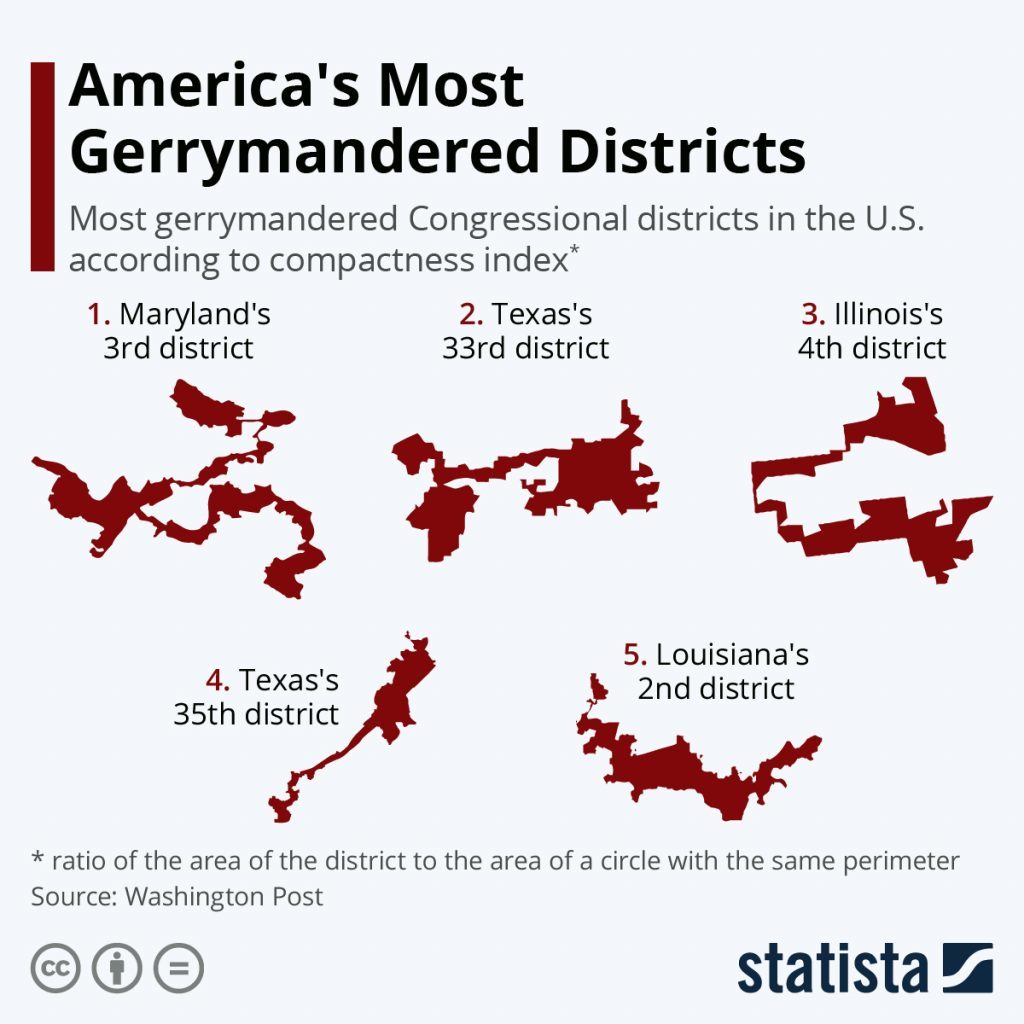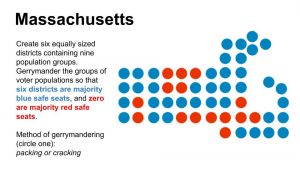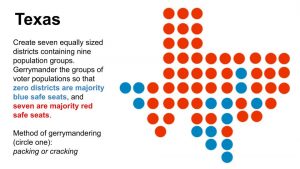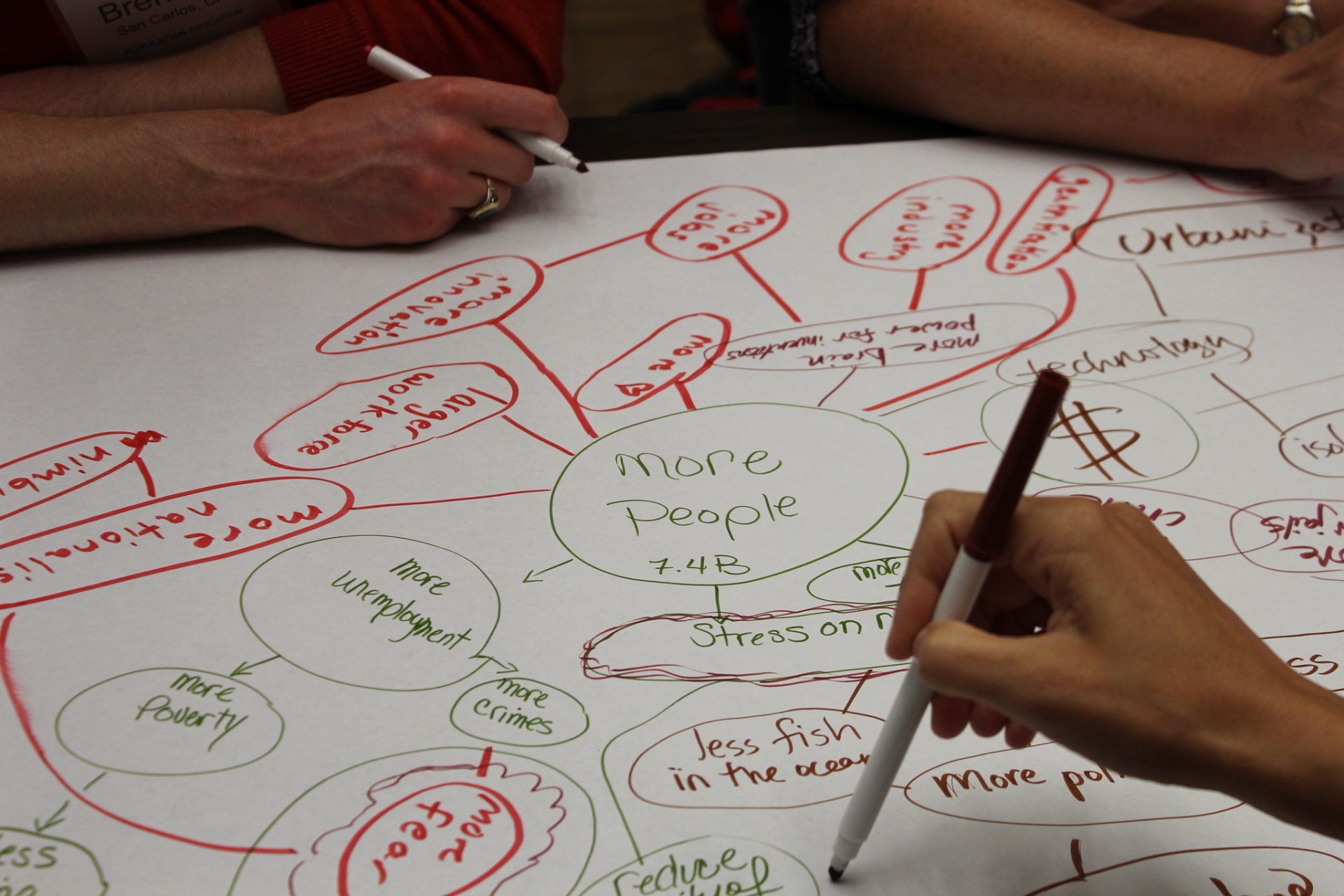Building Civic Competence With PopEd
Written by Pam Wasserman, Senior Vice President for Education, and Pete Bailey, Professional Development Associate | Published: March 15, 2021

A Lesson on Political Representation
The concept of democracy has been much on our minds these past several months, as we’ve recognized the fragility of something many of us took for granted in the United States. Even before the rioters stormed the U.S. Capitol on January 6, 2021, to try to overthrow a free and fair election, other pernicious strategies had been used to try to erode our democracy—voter suppression, misinformation from dubious media sources, and gerrymandering.
To coincide with the 2020 Decennial Census, the PopEd team released a new set of lesson plans and student readings, aptly named 330 Million in the USA. Designed for secondary social studies classrooms, some of the components are especially relevant for classes on U.S. Government and Civics.
One in particular, “The People’s House,” examines U.S. population and congressional representation. Part 1 of the lesson sets up a debate on the appropriate size of the U.S. House of Representatives based on our current population. For debate prep, students explore historical primary sources from The Federalist Papers (Madison suggested a body that would grow to maintain a 1:30,000 ratio) to the 1911 Apportionment Act capping the size to its present 435 (1:216,000 that year) to contemporary essays on the merits of lifting that cap to allow for better representation (today’s average is 1:763,000).
 One of the arguments for increasing the number of congressional districts is to make it more difficult for ruling parties in each state to gerrymander the districts using the latest census data. That brings us to Part 2 of the activity, which explains gerrymandering—the history, techniques, and resulting tortured shapes of many of our current districts.
One of the arguments for increasing the number of congressional districts is to make it more difficult for ruling parties in each state to gerrymander the districts using the latest census data. That brings us to Part 2 of the activity, which explains gerrymandering—the history, techniques, and resulting tortured shapes of many of our current districts.
 The activity invites students to be district mapmakers practicing their skills at two insidious gerrymandering techniques: cracking and packing. “Cracking” separates groups of people whose similar voting habits would likely lead to electing a representative of a certain political party. “Packing” combines groups of similar voters—regardless of location—into the same district so their votes do not influence election results in more than one district.
The activity invites students to be district mapmakers practicing their skills at two insidious gerrymandering techniques: cracking and packing. “Cracking” separates groups of people whose similar voting habits would likely lead to electing a representative of a certain political party. “Packing” combines groups of similar voters—regardless of location—into the same district so their votes do not influence election results in more than one district.
Try your mapmaking skills at the sample worksheet assignments below. Then consider: How does gerrymandering affect elections? Why is gerrymandering often described as undemocratic? How could the United States end partisan gerrymandering? These questions will be especially timely this year as state legislatures receive the new 2020 Census data and conduct the once-a-decade reapportionment of congressional districts.
Answers: The Massachusetts assignment illustrates “packing,” while the Texas assignment is an example of “cracking.” Sample solutions to grouping the districts can be found on the last page of the activity here.
For high school students approaching voting age, this activity may soon become more than an academic exercise, as they consider the weight of their votes in our democratic process. With so much at stake for our nation’s future, PopEd will continue to find ways to foster civic competence through our curriculum.
The full activity, as well as a blog post explaining redistricting and the U.S. Census, can be downloaded from the PopEd website:

